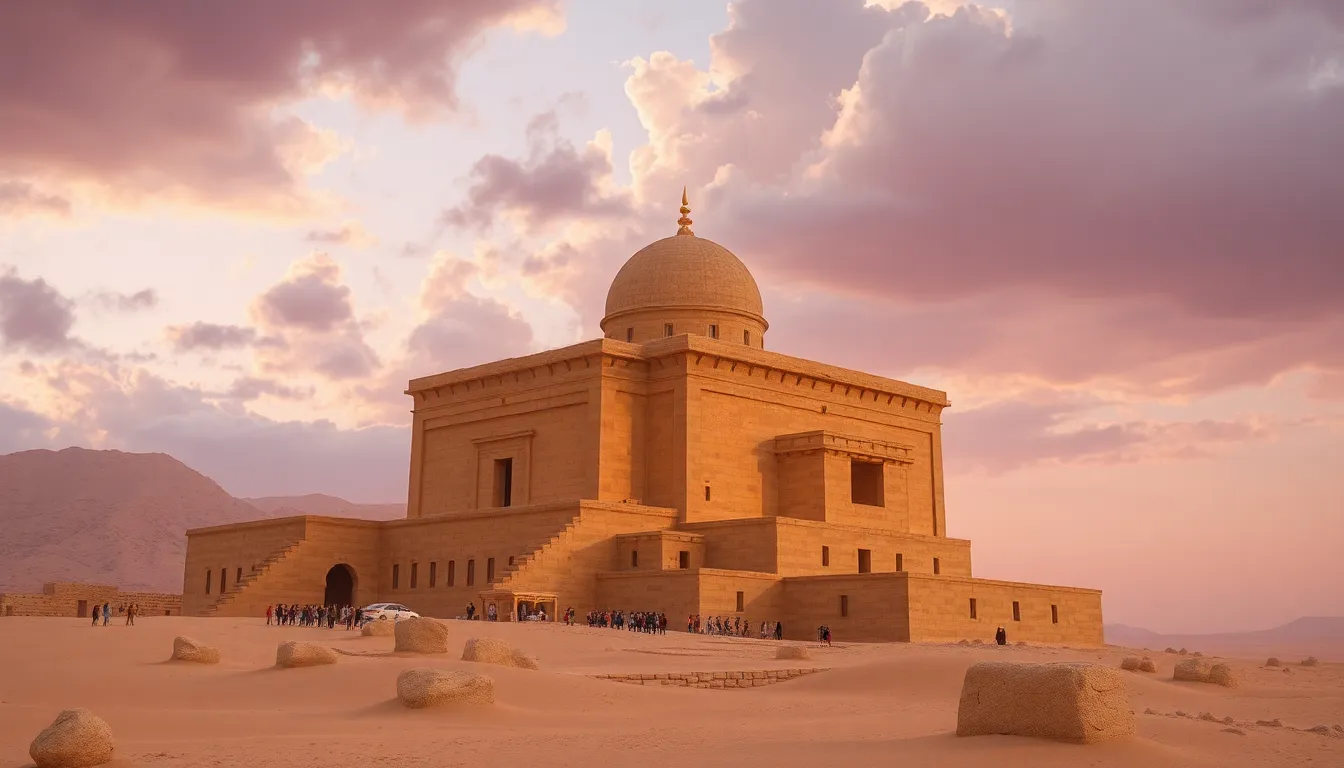The Mythical Geography of the City of Siwa
I. Introduction to Siwa: A Gem in the Desert
Siwa Oasis, located in the Western Desert of Egypt, is one of the most enchanting places on Earth. Nestled between the harsh expanse of sand dunes and rocky plateaus, Siwa is renowned for its rich cultural heritage, stunning landscapes, and significant historical relevance. Its unique position not only makes it a geographical marvel but also a significant site in ancient Egyptian mythology.
The concept of mythical geography refers to the ways in which physical landscapes are intertwined with cultural narratives and beliefs. In Siwa, this interplay creates a rich tapestry of history and legend that captivates both visitors and scholars alike.
II. Historical Context of Siwa
The history of Siwa is deeply rooted in ancient civilizations. The oasis has been inhabited for thousands of years and has served as a crucial stop for traders crossing the desert. The strategic location of Siwa made it a melting pot of cultures, influencing its development over time.
In Egyptian mythology, Siwa holds a prominent place as the home of the Oracle of Amun. This site attracted countless pilgrims seeking guidance from the gods. Throughout history, notable figures such as Alexander the Great visited Siwa to consult the Oracle, cementing its reputation in both history and mythology.
- Alexander the Great: His pilgrimage to the Oracle in 332 BCE is one of the most famous historical events in Siwa.
- Ancient Egyptians: They regarded Siwa as a sacred land, rich in divine presence.
III. The Oasis: A Natural and Mythical Landscape
Siwa is characterized by its lush palm groves, salt lakes, and fertile land, surrounded by endless desert. This unique geography provides a striking contrast that contributes to its mythical allure. The oasis serves as a lifeline in the arid landscape, offering sustenance and sanctuary.
In local mythology, the oasis is often seen as a symbol of life amidst desolation, representing hope and resilience. Water sources, such as the famous Cleopatra’s Bath, are not only vital for survival but also hold sacred significance in local beliefs.
IV. Sacred Sites and Their Mythical Importance
Siwa is home to numerous sacred sites that reflect its rich cultural and mythical heritage. Among these, the Oracle of Amun stands out as a pivotal location in both history and mythology.
The Oracle, situated within the Temple of Amun, was believed to be the earthly representative of the god. Legends suggest that the Oracle provided prophecies and guidance to those who sought divine intervention.
- Temples and Ruins: The remnants of ancient temples tell stories of worship and devotion, enhancing Siwa’s cultural significance.
- Identity: These sacred sites play a crucial role in shaping Siwa’s identity, connecting the past with the present.
V. Myths and Legends Associated with Siwa
Siwa’s folklore is rich with tales that have been passed down through generations. These stories often reflect the values, beliefs, and struggles of the local population.
One popular legend speaks of the mythical creature known as the Siwan Guardian, believed to protect the oasis and its inhabitants. Such tales illustrate the deep connection between the people and their environment, highlighting the intersection of myth and reality.
- Folklore: Local legends often embody moral lessons and cultural values.
- Modern Interpretations: Contemporary Siwans continue to reinterpret these myths, blending traditional beliefs with modern life.
VI. Siwa’s Flora and Fauna: Nature’s Mystical Elements
The unique ecosystem of Siwa supports a variety of plant and animal species that contribute to its mystical ambiance. Date palms, olive trees, and various herbs thrive in this oasis, each carrying symbolic meanings in local myths.
Wildlife in Siwa includes unique bird species and small desert mammals, which play vital roles in the local ecosystem and cultural narratives.
- Symbolism: Plants and animals often symbolize fertility, protection, and prosperity in Siwan myths.
- Conservation Efforts: Efforts to preserve this unique biodiversity are essential for maintaining Siwa’s cultural heritage.
VII. The Cultural Impact of Mythical Geography on Siwa
Myths and legends significantly shape the customs and traditions of the Siwan people. Festivals, rituals, and everyday practices are often influenced by the stories of their ancestors.
Furthermore, Siwa’s mythical geography plays a crucial role in tourism, drawing visitors from around the world who seek to experience its wonders. The local economy benefits from this influx, yet there are ongoing discussions about preserving the cultural integrity amidst modernization.
- Local Customs: Many traditions are rooted in the myths associated with the land.
- Tourism Influence: The unique geography and mythology attract countless tourists, impacting the local economy.
- Cultural Preservation: Maintaining the essence of Siwa’s heritage is vital in the face of rapid changes.
VIII. Conclusion: The Enduring Legacy of Siwa’s Mythical Geography
The rich tapestry of myths surrounding Siwa continues to resonate in contemporary society. As a center of cultural and historical significance, Siwa invites reflection on the interplay between myth and reality.
As we look to the future, the preservation of Siwa as a mythical and cultural landmark remains paramount. Encouraging exploration and appreciation of its heritage not only honors the past but also enriches the lives of future generations.
In conclusion, Siwa is not merely a geographical location; it is a living testament to the enduring power of myths and the stories that shape our understanding of the world.




